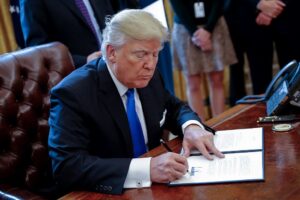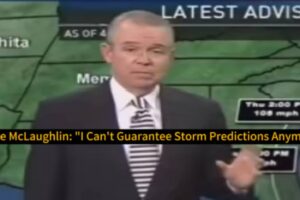Communities large and small across the United States erupted in protest on Saturday as opponents of President Donald Trump’s administration took to the streets to express their growing concerns. From bustling midtown Manhattan to the historic grounds in Concord, Massachusetts, demonstrators gathered in a broad, coordinated show of defiance.
The events varied in tone and style — some, like the reenactment of the Battles of Lexington and Concord, tied the protests to the nation’s revolutionary origins, while others focused on direct community action through food drives and volunteer work. Yet, a single thread unified them: a rallying cry against what many perceive as an erosion of America’s democratic ideals under Trump’s leadership.
Echoes of the Revolution: Protests at Historic Sites
In Concord, Massachusetts, where the “shot heard ’round the world” sparked the American Revolution 250 years ago, citizens again gathered to assert their belief in the need for resistance. Thomas Bassford, an 80-year-old retired mason from Maine, traveled three hours to attend, bringing his partner, daughter, and two grandsons to witness history — both past and present.
“This is a very perilous time in America for liberty,” Bassford said, emphasizing the importance of educating the younger generation about standing up for freedom. Similarly, Boston resident George Bryant stood at the site holding a sign that read, “Trump fascist regime must go now,” warning that Trump was fostering a “police state” by undermining constitutional checks and balances.
Diverse Voices, Shared Concerns: From D.C. to Chicago
In Washington, D.C., Bob Fasick joined crowds outside the White House, citing fears over attacks on due process, Social Security, and other federal safety-net programs. “I cannot sit still knowing that if I don’t do anything, the world we’re leaving for our children is not one I’d want to live in,” said Fasick, a retired federal worker from Virginia.
Meanwhile, in Chicago, the 50501 Movement — short for “50 states, 50 protests, 1 movement” — brought throngs of demonstrators to Daley Plaza for the second time this month. Protester Jim Coleman expressed hope that the movement’s energy could pressure the government into action. Originating from a Reddit idea, the 50501 Movement has quickly grown into a powerful grassroots effort, organizing hundreds of protests across Colorado and beyond.
Economic Anxiety and Immigration Fears Fuel Demonstrations
Protests in Philadelphia, labeled the “No Kings” rally, attracted over a thousand participants. Organizers there linked Trump’s actions to cuts in federally funded programs, job losses, and anti-immigrant policies. “People are concerned about their immigrant family members, their jobs, and the state of the nation,” said activist Talia Giles.
Similarly, in Manhattan, demonstrators chanted against Immigration and Customs Enforcement (ICE) and decried Trump’s use of the 1798 Alien Enemies Act to justify deportations. Protester Marshall Green warned that invoking wartime powers against immigrant communities bypassed fundamental due process protections, calling for congressional resistance against what he described as unconstitutional overreach.
Alarm Over Trump’s Executive Overreach and the Future of Democracy
Among the most consistent concerns raised was the perception that Trump’s administration had dangerously expanded executive power at the expense of the judiciary and legislature. Protesters like Melinda Charles of Connecticut voiced alarm over Trump’s open defiance of federal court rulings and his targeting of institutions like Harvard University for perceived political opposition.
“We’re supposed to have three equal branches of government,” Charles said. “To see the executive branch grow so powerful is simply unbelievable.” Across the nation, protesters emphasized that their actions were not just about resisting Trump but about defending the very foundation of American democracy — a battle they believe is as crucial now as it was 250 years ago.














